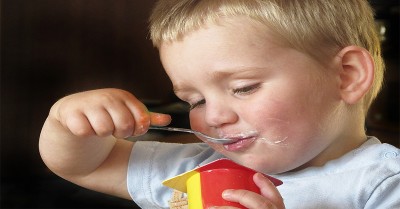When Parents are sending food from home, it's important that they understand they need to bring snacks and pack a lunch that is healthy and nutritious for their child. For some parents, who may be busy, it may be challenging to pack the right foods so it's vital that the service and families collaborate to promote healthy eating.
Requirements For Healthy Eating and Nutrition in Childcare
For services that require parents to bring food from home, you must meet the requirements of the National Quality Framework.
In Quality Area 2 - Children’s Health and Safety, this focuses on supporting and promoting children’s health and safety when they are attending education and care services.
In particular, element 2.1.3 states that:
- Healthy eating and physical activity are promoted and appropriate for each child.
The National Quality Standard and National Regulations require that all services (whether or not they provide food and beverages):
- actively promote healthy eating (element 2.1.3)
- have in place policies and procedures in relation to nutrition, food and beverages, dietary requirements and ensure policies and procedures are followed (regulations 168(2) and 170)
- ensure children have access to safe drinking water at all times (regulation 78)
- ensure children are offered food and beverages appropriate to the needs of each child on a regular basis throughout the day (regulation 78).
Partnerships With Families
During enrolment, provide families with a "Healthy Eating Pack". This should contain your services healthy eating policy along with information on the daily nutritional intake for children and suggestions about healthy and nutritious food options that can be packed and sent from home. Promoting healthy eating, especially when food is sent from home shouldn't just end during enrolment, parents need to be constantly reminded here are some other ideas:
- Share information with families about where to get good fresh produce. New families may not know about things like this.
- Provide families with up to date information on ways to promote good nutrition at home and at the service.
- Invite other professionals such as a child health nurse, dietician, or nutritionist, to speak at information nights for families to promote healthy eating and good nutrition.
- In the monthly newsletter, have a healthy eating space where you can add snack and food ideas, quick recipes etc.
- Display snack ideas, lunch ideas in the foyer where parents can see.
- Add brochures, handouts etc. near sign-in area for parents to take home etc.
Practical Issues For Busy Families
One of the most common issues that you may face is that parents often say that they are too busy to pack a healthy nutritious meal. This seems to involve a lot more planning, more shopping and parents with less time will consider this difficult. Offer the following solutions:
Foods such as sandwiches can be prepared the night before or on the weekend, frozen, then taken for each day’s lunch box. Suitable foods to freeze include:
- bread
- cooked meat
- cheese
- baked beans
- mashed eggs
- yeast or vegetable spreads such as Vegemite.
Parents can prepare and freeze quantities for about 2 weeks and choose suitable fillings such as:
- lean cooked meals
- lean skin-free chicken
- canned fish
- low-fat cheese
- grated cheese
- avocado
- baked beans
- hard boiled egg
They can be removed from the freezer and put straight in the lunchbox and will thaw out (and be fresh) by mealtime.
Options for busy families also include:
- Leftovers from the night before
Sandwiches with simple fillings on different types of breads (pita, rolls, jaffles, bagels, french, paninis, muffins, crumpets, mixed grain, wholemeal, high-fibre white, rice or corn cakes etc) cut in small sizes for little people.
Try these sandwich fillings:
- light cream cheese, grated carrot, sultanas and celery
- low-fat cheddar cheese, sliced apple and celery
- cottage cheese, celery tuna and sprouts
- cottage cheese, chopped dates, pineapple and sprouts
- avocado, celery, tomato and lettuce
- avocado, grated carrot and bean sprouts
- lean ham and fruit chutney
- chopped skinless chicken, cottage cheese and tabouli
- mashed bananas and cottage cheese
- homos, dried tomato and sprouts
- quiches
- pastas and noodle dishes
- rice dishes
- fish cakes, nuggets
- potato baked or as salads ie: with tuna, cheese etc.
- meat and vegetable filled triangles
- boiled eggs (kept cool in the lunchbox)
- chicken nuggets
- pizza
- baked beans or tinned spaghetti
Dairy
- yogurts,
- fromage frais
- fruit and custard packs
- tropical smoothies
- mousses, ricotta and yogurt dip
- yogurt jellies
- rice custards
- plain custards
- cheese fingers, slices, triangles
Fruit & Vegetables
- fresh fruit (children tend to prefer it sliced which is easier to handle). For cut fruit that tends to go brown i.e. Apples - squeeze lemon juice
- fruit snacks
- dried fruit
- jellied fruit
- canned fruit
- fruit juice (frozen popper used as ice block) 100% fruit juice preferred.
- fruit salad
- fruit kebabs (ie. piece of banana, strawberry, rockmelon and paw paw per kebab)
- frozen oranges
- fruity yogurt salad
- cherry tomatoes (for children older than 5 years as they can be a choking risk)
- fruit smoothies and fruit whips
- celery, carrot or zucchini sticks topped with soft cheese and sultanas
- corn (canned or microwaved\steamed)
Snacks
- healthy cakes, fruit buns and biscuits
- pikelets, Muffins and scones
- muesli and fruit bars (check food labels and choose brands lower in sugar)
- celery boats
- rice cakes or low-fat cracker biscuits with a scrape of reduced fat cheese or vegemite
- rice crackers or baked wheat pretzels
- mini wheat or weetbix breakfast cereal
- popcorn and you could add a small amount of dried fruit for variety
- pita chips (cut pita bread into triangles, sprinkle with parmesan cheese and bake for 15-20 minutes)
Parents Sending Junk food From Home
No matter how many times you tell parents or send information home or display posters, there are going be times when parents are going to be sending junk food from home. When this occurs, a gentle reminder to the parent should suffice however sometimes this doesn't get the message across so what can you do?
- Provide parent with a list of accceptable healthy foods
- Have a sticker chart for children that bring healthy lunchs
- Create a Healthy Eating Award and reward it to the child that brings the healthiest lunch.
- Place a bright red sticker on each junk food item "We're sorry. Due to our healthy eating policy, we could not serve this item to your child. An alternative was provided".
For parents that constantly bring in junk food, offer three free healthy meal alternatives to their child then afterwards charge parents an extra fee to cover costs.
It's important to develop a healthy eating policy that is comprehensive and covers the mealtime environment, acceptable foods, alternative options for children bringing junk foods, foods on special occasions etc. All Educators within the service should also understand and promote the importance of healthy eating for children and how to overcome challenges that may arise.
Overall collaborating with families, keeping them informed, assisting families knowledge on healthy food choices and addressing any concerns will ensure that parents are making the right food choices for their child.
References:
- Lunchbox Tips, Better Health Channel Victoria
- Early Childhood Services, Healthy Eating Advisory Services
- Healthy Eating In The NQS, Nutrition Australia Victoria Division







 As an Educator in Australia, your pay rate falls under the Children’s Services Award 2010. This award states the minimum amount that an employer can
As an Educator in Australia, your pay rate falls under the Children’s Services Award 2010. This award states the minimum amount that an employer can When working as a qualified Early Childhood Teacher (with a university degree) within a service, your rate of pay will come from the Educational Services
When working as a qualified Early Childhood Teacher (with a university degree) within a service, your rate of pay will come from the Educational Services When working as a Diploma Qualified Educator your pay rate is from the Children's Services Award 2010. This Award states your minimum rate of pay
When working as a Diploma Qualified Educator your pay rate is from the Children's Services Award 2010. This Award states your minimum rate of pay When working as a Cert 3 Qualified Educator, your pay rate is from the Children's Services Award 2010. This Award states your minimum rate of
When working as a Cert 3 Qualified Educator, your pay rate is from the Children's Services Award 2010. This Award states your minimum rate of Educational Leaders play a crucial role in their early childhood service by ensuring that the educational program aligns with best practices and supports the holistic
Educational Leaders play a crucial role in their early childhood service by ensuring that the educational program aligns with best practices and supports the holistic In early childhood education and care, ratios are more than a technicality—they are a frontline safeguard. Every child deserves responsive supervision, emotional connection, and developmental
In early childhood education and care, ratios are more than a technicality—they are a frontline safeguard. Every child deserves responsive supervision, emotional connection, and developmental With the new national child safety reforms kicking in on 1 September 2025, early childhood services like yours have a real opportunity to lead the
With the new national child safety reforms kicking in on 1 September 2025, early childhood services like yours have a real opportunity to lead the Here’s a comprehensive Mobile Phone and Smart Watch Policy tailored for early childhood education and care (ECEC) services in Australia, aligned with the latest 2025
Here’s a comprehensive Mobile Phone and Smart Watch Policy tailored for early childhood education and care (ECEC) services in Australia, aligned with the latest 2025 The Sea of Fish Challenge is a national initiative that invites children, educators, families, and communities to create and display fish artworks as a symbol
The Sea of Fish Challenge is a national initiative that invites children, educators, families, and communities to create and display fish artworks as a symbol Across the early childhood education and care sector, educators are sounding the alarm: current staffing ratios are insufficient to deliver safe, meaningful, and developmentally appropriate
Across the early childhood education and care sector, educators are sounding the alarm: current staffing ratios are insufficient to deliver safe, meaningful, and developmentally appropriate


